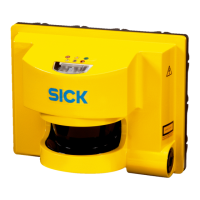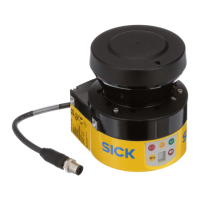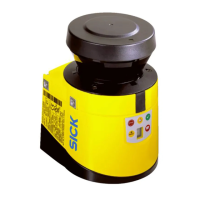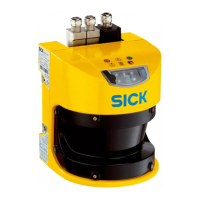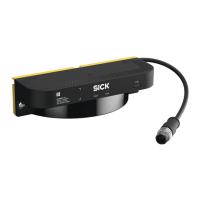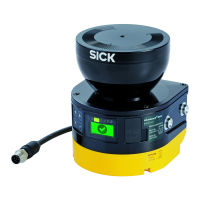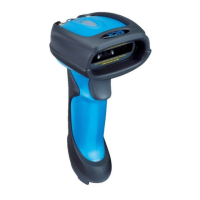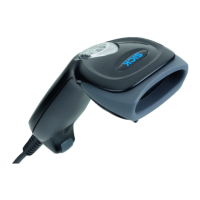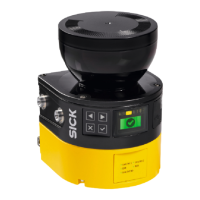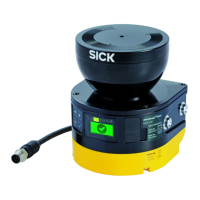Operating instructions Chapter 12
S300
8010948/YY96/2016-02-17 © SICK AG • Industrial Safety Systems • Germany • All rights reserved 127
Subject to change without notice
Technical specifications
Minimum Typical Maximum
OSSDs
Output signal switching device pair 2 PNP semiconductors, short-circuit
protected
3
2)
, cross-circuit monitored
Safe state in case of an error At least one OSSD is in the OFF state.
HIGH switching voltage at 250 mA V
S
– 2.7 V V
S
Switching voltage LOW S300 Medium Range 0 V 0 V 3.5 V
Switching voltage LOW S300 Long Range 0 V 0 V 2.0 V
Source switching current
33)
6 mA 0.25 A
Leakage current
3
4)
250 µA
Load inductance 2.2 H
Load capacity 2.2 µF at
50 c
Switching sequence (without switching) 5 ¹/s
Permissible cable resistance
3
5)
2.5 c
Test pulse width
36)
230 µs 300 µs
Test frequency 120 ms
Power-up delay of the OSSDs from red to
green
120 ms
Time offset on switching the OSSDs between
OSSD2 and OSSD1
2 ms
Configuration and diagnostics interface
Communication protocol RS-232 (proprietary)
Transmission speed 38400 Baud
Cable length at 38400 Baud and 0.25 mm²
cables
15 m
Galvanic isolation No
Output TxD HIGH 5 V 15 V
Output TxD LOW –15 V –5 V
Voltage range RxD –15 V 15 V
Switching threshold RxD LOW –15 V 0.4 V
Switching threshold RxD HIGH 2.4 V 15 V
Short-circuit current at TxD –60 mA 60 mA
Max. voltage level at RxD –15 V 15 V
Max. voltage level at TxD –11 V 11 V
32)
Applies to the voltage range between V
S
and 0 V.
33)
Switching currents up to 500 mA are allowed briefly (100 ms).
34)
In the case of a fault (0 V cable open circuit) maximally the leakage current flows in the OSSD cable. The
downstream controller must detect this status as LOW. A FPLC (fail-safe programmable logic controller) must
be able to identify this status.
35)
Make sure to limit the individual line core resistance to the downstream controller to this value to ensure that
a cross-circuit between the outputs is safely detected. (Also note EN 60204<1.)
36)
When active, the outputs are tested cyclically (brief LOW). When selecting the downstream controllers, make
sure that the test signals do not result in deactivation.
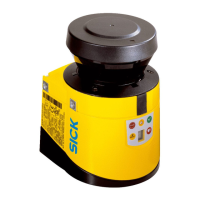
